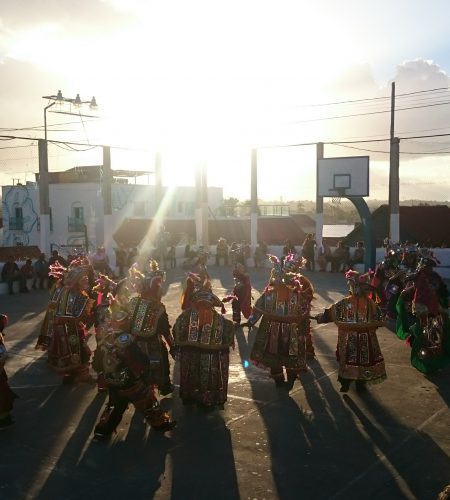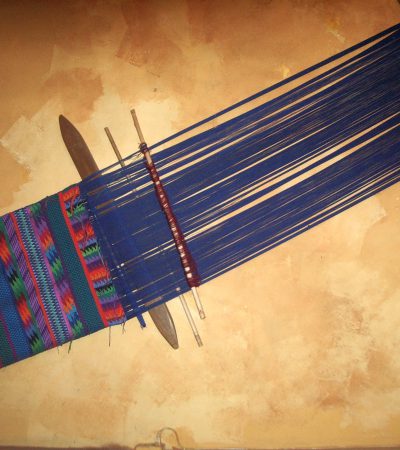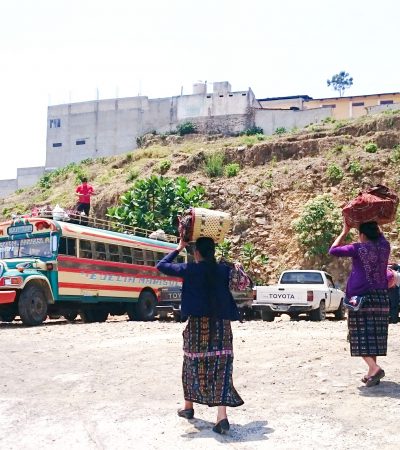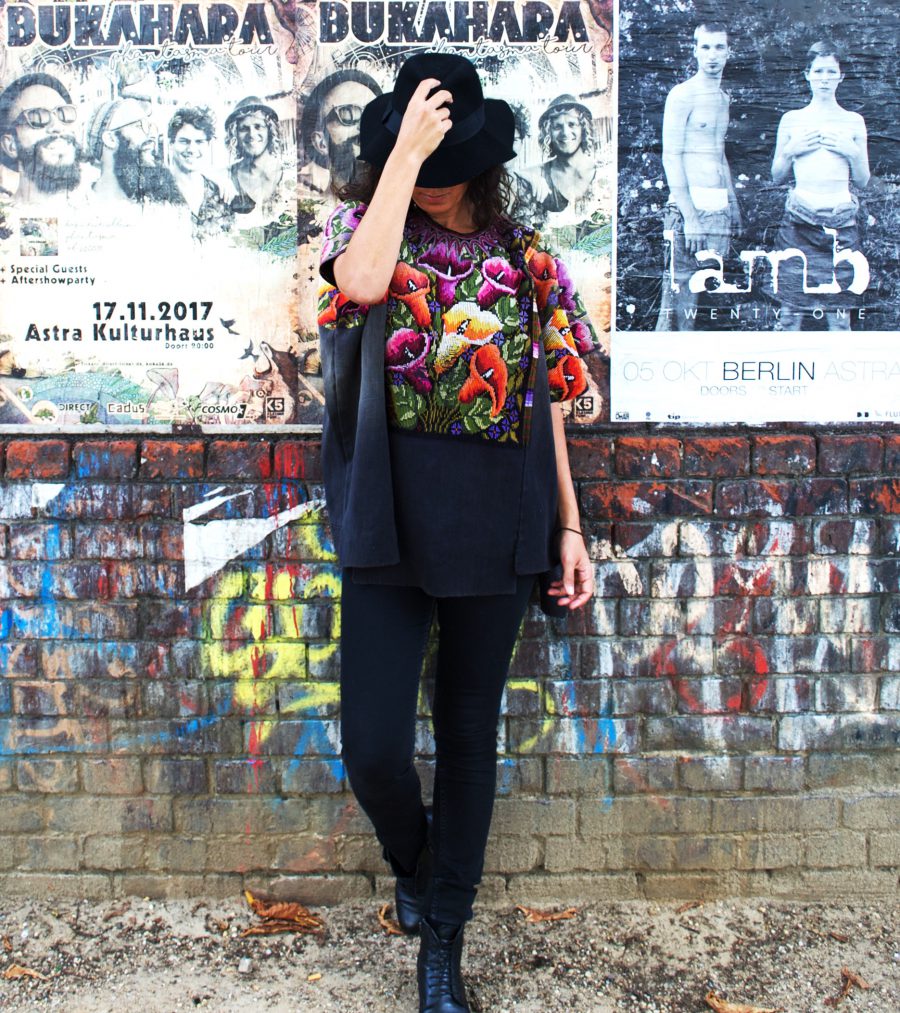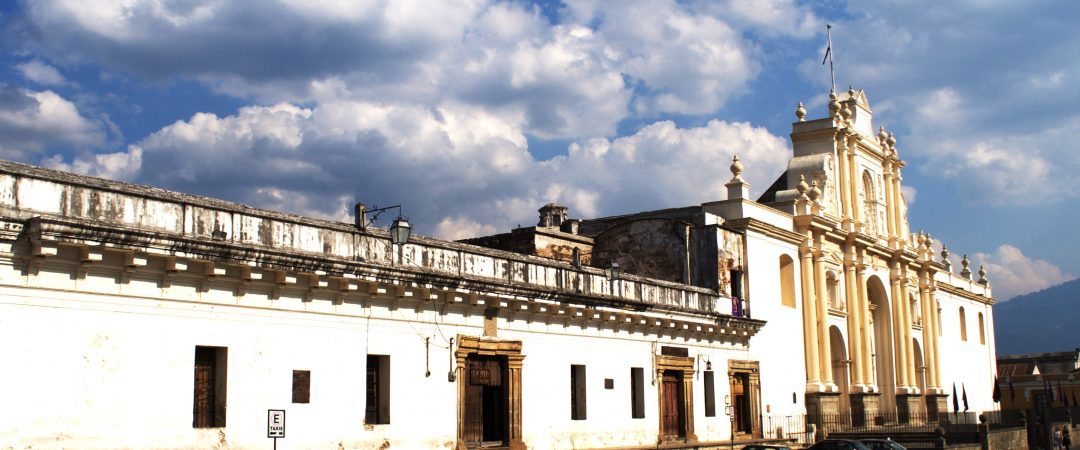Travelling through Guatemala means a journey through a great variety of indigenous groups. The Mayan community is the largest, but also this group can again be divided into 21 autonomous categories. For those who love distinct colours and patterns, this country is one little fiesta. Each design reflects the heritage of the clothing.
We particularly love the huipiles or ‘po’t’, the richly embroidered blouses worn by women. They are generally woven on the backstrap loom (see below). Making huipiles is spadework; it can take up to 6 months to create one single blouse.
Travelling through the country, we saw women sitting on their knees, weaving designs and symbols on pieces of cloth. But the chances of spotting such handwork becomes smaller: the influx of cheap mass-produced clothes from China make handwoven garment losing its popularity.

